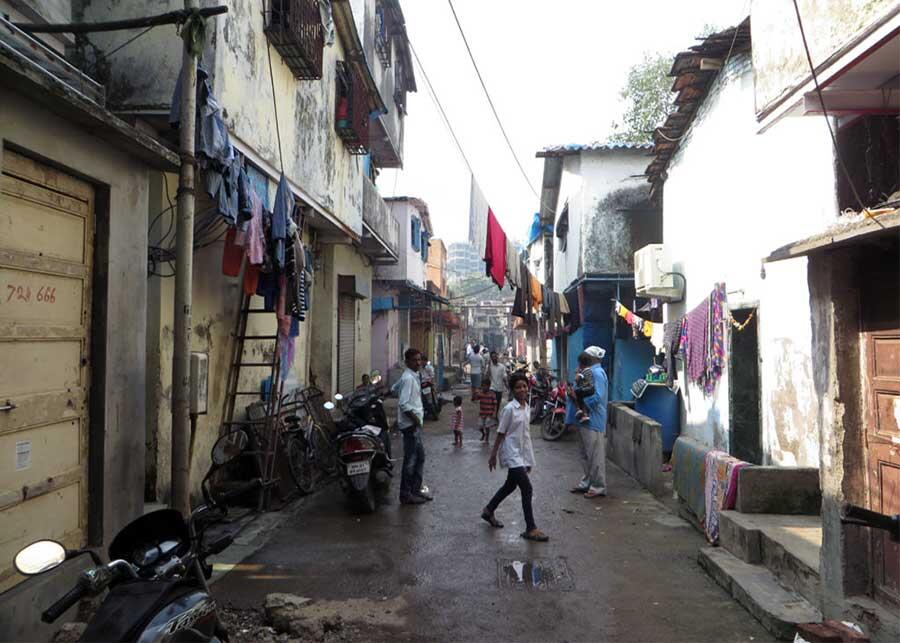
The “transit camp” designation appears to be in name only, as this community has been in place for forty years. Unlike the surrounding Dharavi slum, the site is planned on a grid and basic infrastructures such as public toilets and water taps, sewer lines and trash collection were provided by the state, similar to “site and services” schemes. Residents were originally moved here from a slum neighborhood nearby and given plots to construct their own homes of one storey. Over time and against zoning regulations, homes have expanded up to four storeys. Some homes have opted over time to build their own in-house toilets and water taps. Garbage piles and open sewers run through the community. Flooding is a problem for part of the year, with many homes and businesses constructing stoops to raise above the level of the streets and sewers or concrete walls to block floodwaters. There is a clear hierarchy of streets, with broad, traffic-filled main commercial roads; medium-width pedestrian streets with a mix of ground-floor commercial, residential, schools and religious structures; and narrow, shadowed pedestrian alleys between housing plots. Alley stoops form spaces for sitting and socializing. The community is religiously diverse, with a single block housing a mosque, church and Hindu temple.
Photos: Kate Cahill





